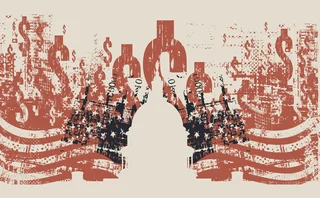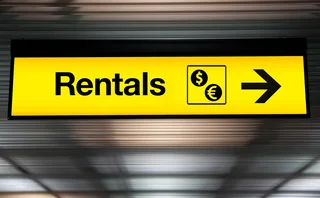
Dealers face tough test on FX costs
Banks may pass on SA-CCR capital costs to FX clients
The trading environment for foreign exchange businesses over the past 18 months has been categorised by ever-tightening spreads. Transaction costs for buy-side firms have largely gone down across FX instruments, as banks compete intensely for flow in an increasingly commoditised sector of the market. Sometimes, banks are willing to trade at a cost to themselves if it means they make money elsewhere with the same client.
Price is first, second and third of mind for an asset manager, pension fund or corporate selecting an FX trading counterparty. The head of currency trading at a large US asset manager explains that if someone was to start charging wider spreads, the liquidity provider would naturally fall to the bottom of their pool and the manager would instead go with those that offered better prices.
This is why US banks fear the impact that the standardised approached to counterparty credit risk (SA-CCR) could have on their FX businesses. The new framework punishes uncollateralised, directional swaps and forwards trades, and will require banks to put up more capital towards them. What this could mean is that running an FX swaps business, with the added cost of capital, could become a loss-making operation if pricing continues to trend downwards.
There is perhaps a growing realisation that banks need to actively manage their SA-CCR exposures
If it becomes too expensive to deal with certain clients, banks face the inevitable choice of either raising prices or cutting that client if they cannot cover the increased cost of capital.
But when and by how much is unknown. Many banks do not have any concrete data on potential price increases – or at least don’t want to share them just yet – and the jury is out on whether they eat the cost and keep spreads as they are.
Some European banks are in a wait-and-see mode on what the US banks do first, while others believe that widening spreads could become more apparent after the first quarter of 2022. There also seems to be an unequal impact geographically, and European banks that are less restricted by capital constraints – for instance by not having a capital floor in place – could come out on top.
Any FX dealer that chooses to exit the swaps and forwards market will not be good for anyone, the head currency trader at the large US asset manager warns, adding that less competition will mean price increases anyway.
There is perhaps a growing realisation that banks need to actively manage their SA-CCR exposures, whether that is by using optimisation vendors, clearing trades, using futures, or even restructuring portfolios with buy-side clients. These are all complex choices, yet banks may have to get these projects over the line if it means avoiding uncomfortable conversations with clients in the new year.
Only users who have a paid subscription or are part of a corporate subscription are able to print or copy content.
To access these options, along with all other subscription benefits, please contact info@fx-markets.com or view our subscription options here: https://subscriptions.fx-markets.com
You are currently unable to print this content. Please contact info@fx-markets.com to find out more.
You are currently unable to copy this content. Please contact info@fx-markets.com to find out more.
Copyright Infopro Digital Limited. All rights reserved.
As outlined in our terms and conditions, https://www.infopro-digital.com/terms-and-conditions/subscriptions/ (point 2.4), printing is limited to a single copy.
If you would like to purchase additional rights please email info@fx-markets.com
Copyright Infopro Digital Limited. All rights reserved.
You may share this content using our article tools. As outlined in our terms and conditions, https://www.infopro-digital.com/terms-and-conditions/subscriptions/ (clause 2.4), an Authorised User may only make one copy of the materials for their own personal use. You must also comply with the restrictions in clause 2.5.
If you would like to purchase additional rights please email info@fx-markets.com
More on Our take
Trump’s FX impact: a tale of two terms
Traders say Trump version 2.0 is already proving a much trickier task to manage than the original, and have had to adapt
Turn of the skew: FX options dealers balance fragile market
Calls-versus-puts demand flips wildly in response to geopolitical events
Banks seek to advance predictive pricing models
AI and machine learning-based tools could give FX desks the power to forecast currency movements
FX traders revel in March Madness
Chaotic Trump policies finally bring diversity to flows – to the delight of market-makers
Could LPs explore renting out their client franchise?
Connecting regional banks with sophisticated clients may see dealers evolve to become liquidity distribution hubs
Higher rates see corporates reassess FX structured products
Treasurers are getting a taste for dual currency notes and structured forwards
Quants dive into FX fixing windows debate
Longer fixing windows benefit clients, but predicting how dealers will respond is tough
Low FX vol regime fuels exotics expansion
Interest is growing in the products as a way to squeeze juice out of a flat market








